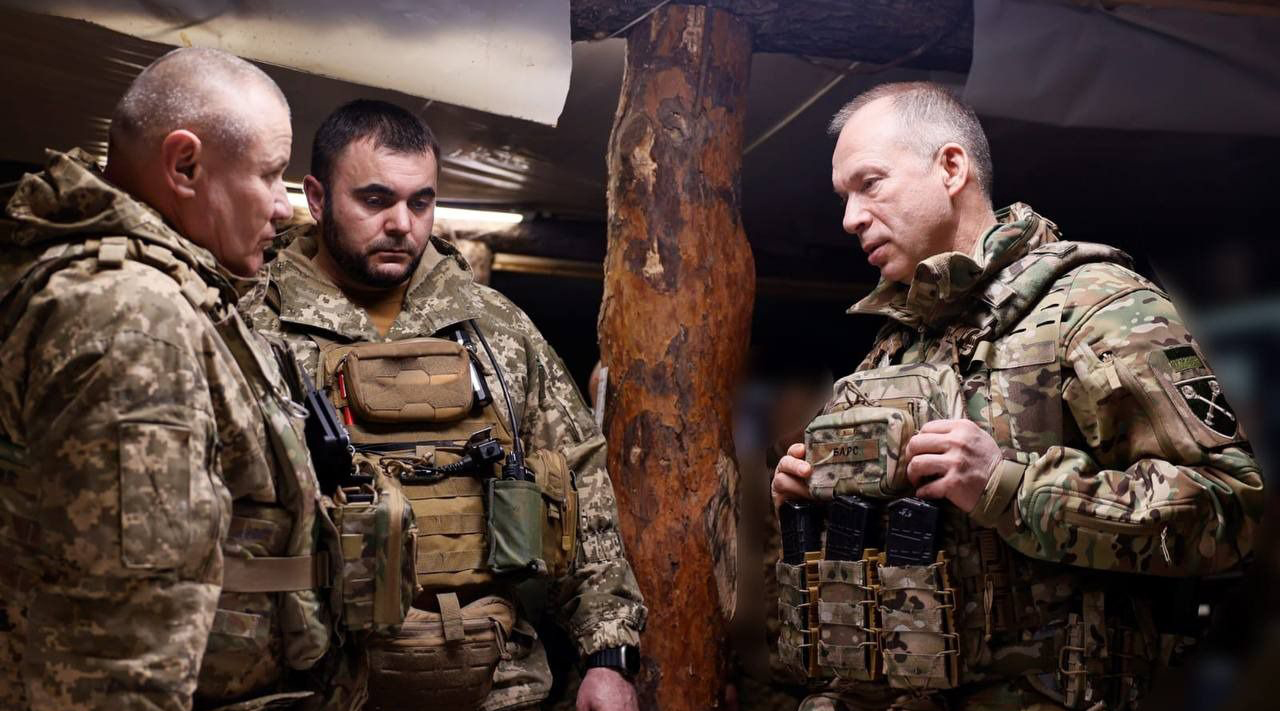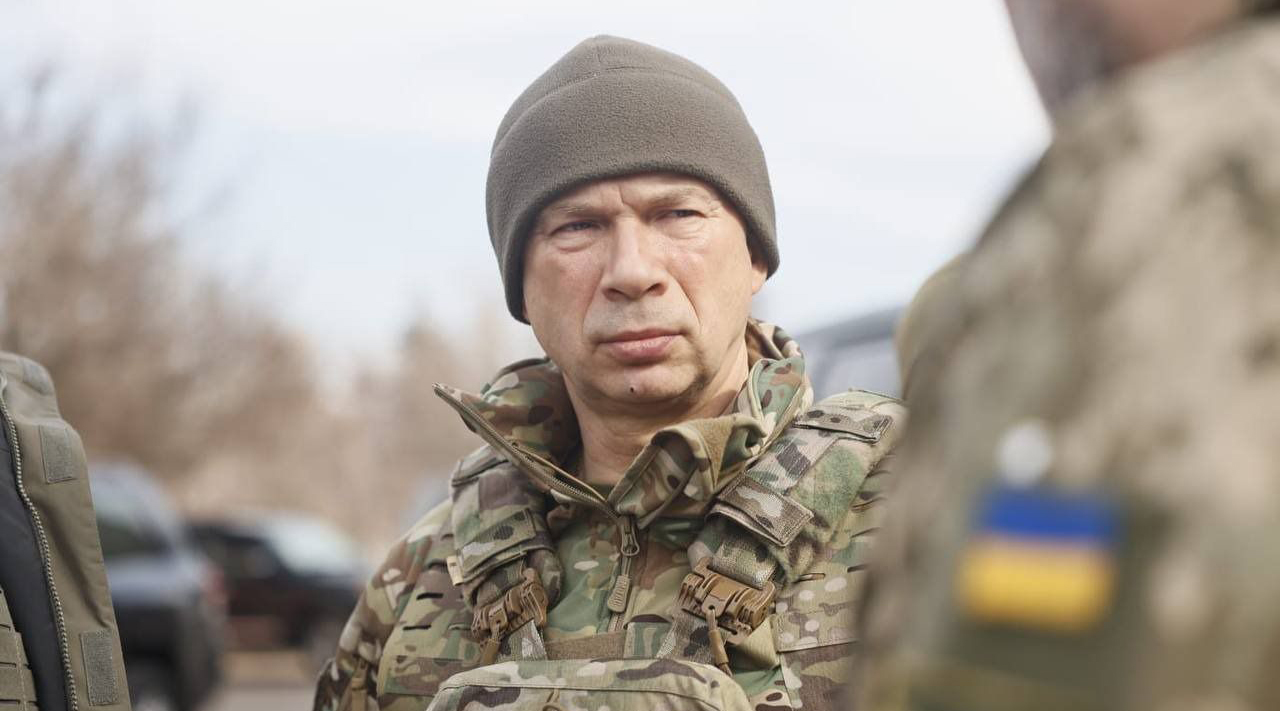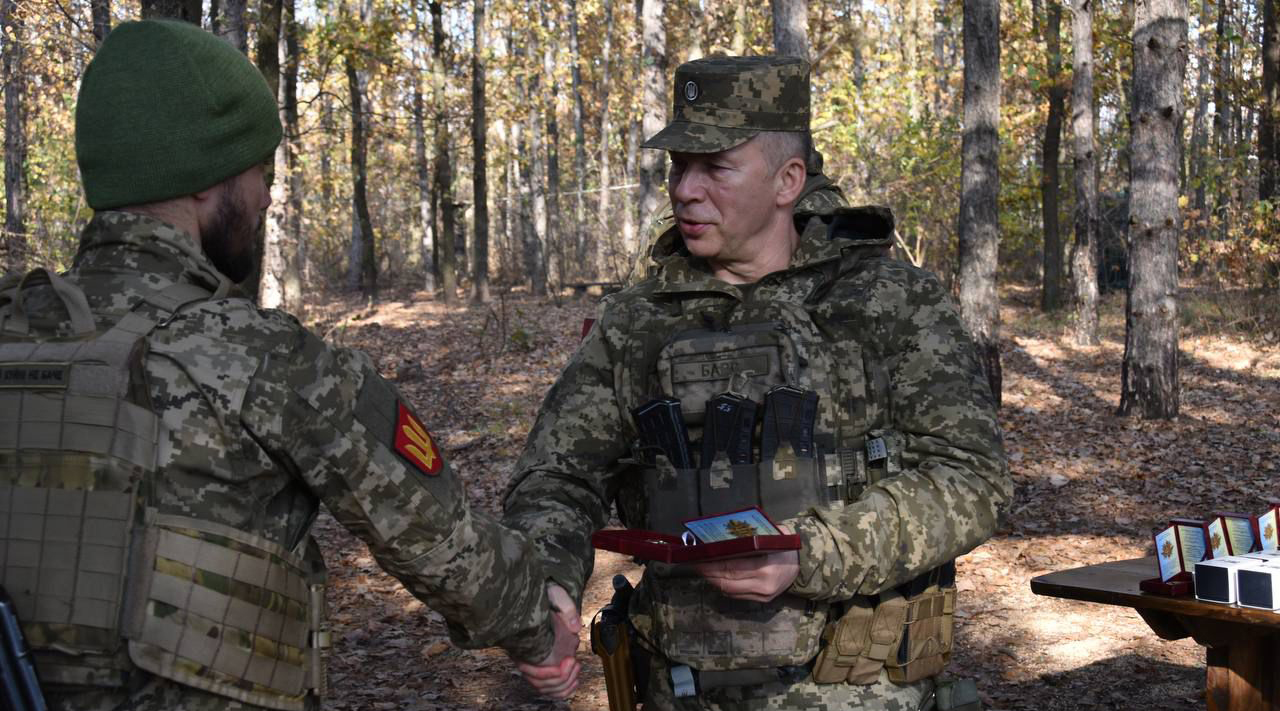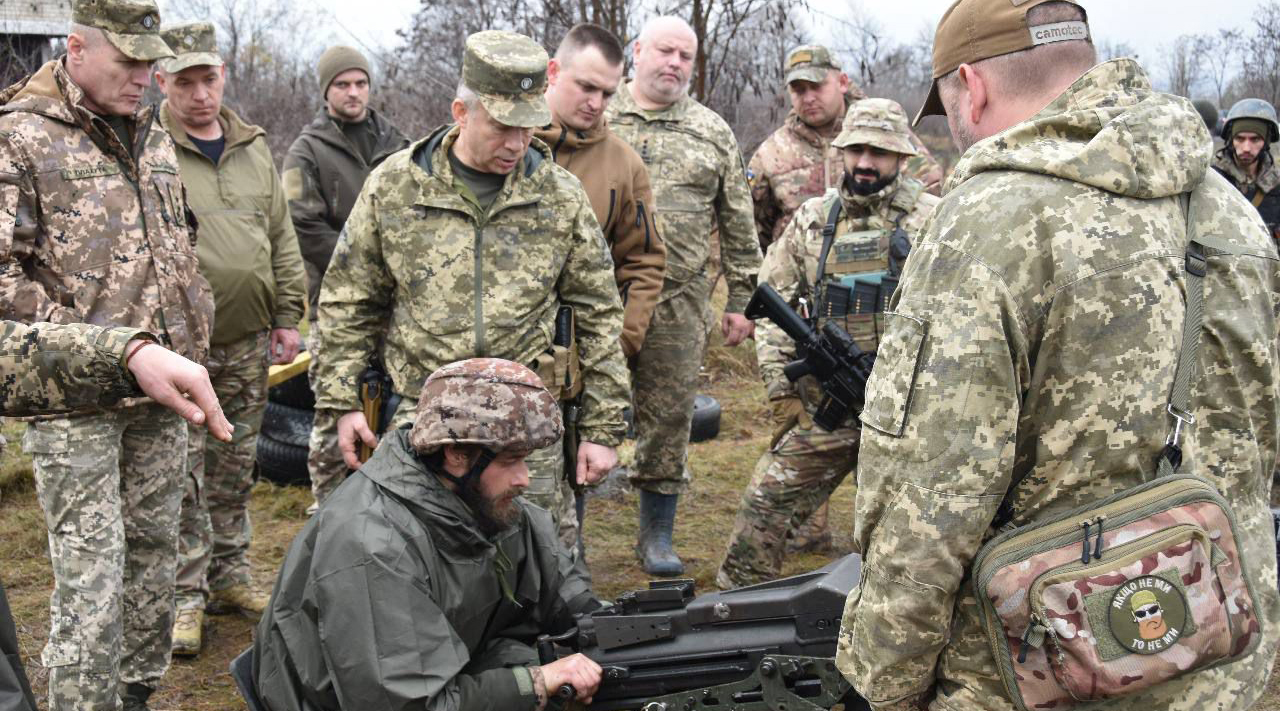Oleksandr Syrskyi was appointed Commander-in-Chief of the Ukrainian Armed Forces under a Ukrainian presidential decree in February 2024. This appointment, as well as subsequent changes in the country's military leadership, the withdrawal of Ukrainian troops from Avdiivka, a lasting offensive by Russian invaders and Ukraine's transition to strategic defense became a matter of close attention, and not only in Ukraine. Western allies and partners started expressing alarming thoughts that Ukraine is losing ground and capabilities to continue the fight against the enemy. The Commander-in-Chief of the Ukrainian Armed Forces, Colonel-General Oleksandr Syrskyi, told Ukrinform how justified such assessments are, what the real battlefield situation is, and what a new strategy of the Ukrainian forces means.
- Oleksandr Stanislavovych, disturbing news continues to arrive from the front. The enemy continues to put pressure on Ukrainian positions, trying to advance in the Kupiansk and Lyman sectors and posing threats to Yampil and Siversk. The situation on the Avdiivka axis remains difficult. We know that the enemy pays for every such step with heavy losses. However, what is happening? Do the Ukrainian Armed Forces have the resources and capabilities to stop such an enemy advance?
- The situation at the front is really difficult. However, it cannot be any different at the front. Undoubtedly, every day requires maximum effort from our soldiers and officers. But we not only are on the defensive, but also move forward in different directions every day. Recently, the number of positions we have returned exceeds the number of lost positions. The enemy did not manage to advance significantly in strategic areas, and his territorial gains, if any, are of tactical importance. We are monitoring this situation.
It should be recognized that the current situation in certain sectors remains tense. The Russian occupiers continue to increase their efforts and have a numerical advantage in manpower. They traditionally do not count on losses and continue to use the tactics of massive assaults. In some areas, units of the Ukrainian Defense Forces repel several dozen attacks.
The experience of the past months and weeks shows that the enemy has significantly increased aircraft activity, using KABs - guided air bombs that destroy our positions. In addition, the enemy resorts to dense artillery and mortar fire. Several days ago, the enemy's advantage in terms of ammunition was about six to one.
However, we learned to fight not by the amount of ammunition, but by the skill of using the weapons that we have. In addition, we make the most of the advantages of unmanned aerial vehicles, although the enemy is trying to catch up with us in this effective weapon.
The enemy continues to carry out offensive operations on a wide front, trying to reach the borders of the Donetsk and Luhansk regions at any cost and pushing us back on the left [east] bank of the Dnipro in the Zaporizhzhia region.
In some areas of the front, we managed to equalize the situation with artillery, and this immediately affected the situation as a whole. Our gunners use high-precision ammunition to destroy enemy concentration areas even tens of kilometers behind the front lines. Every day, the enemy not only suffers significant losses in manpower and equipment, including artillery systems, but he can never feel safe anywhere, including in the temporarily occupied territories of Ukraine. This is an important psychological factor. They will not have peace on our land. Never. And every occupier should be aware of this.
It is clear that these are statistics, but it is important to know that in February-March of this year alone (as of March 26), the enemy lost more than 570 tanks, about 1,430 armored fighting vehicles, almost 1,680 artillery pieces and 64 air defense systems. At the same time, the Ukrainian Defense Forces continue to keep key heights and defense areas under control. Our goal is to prevent the loss of our territory, exhaust the enemy as much as possible, inflict the greatest losses on him, and form and prepare reserves for offensive operations.
It is also very significant that the enemy's activity in the air was also reduced, of course, thanks to the skills of our air defense units. In just ten days in February, they shot down 13 enemy aircraft, including two strategically important A50 early warning and control aircraft.
Therefore, we are fine with the skill of military personnel. We hope to receive from our partners a greater number of air defense systems, and, most importantly, missiles for them, especially given that the enemy has switched to the tactics of massive air strikes against Ukrainian troops, civilian infrastructure, and peaceful Ukrainian cities. We have a duty to protect them.
We continue to change tactics at sea as well. Naval drone attacks on enemy ships are so effective that this allows us to talk about changes in the strategy of combat operations at sea as a whole. We are purposefully destroying the Russian Black Sea Fleet. And we will continue to do so. The latest destruction of several ships in Sevastopol is just another example of this.

- Your appointment was made after a loud and, let us be frank, not entirely understandable resignation from this post of General Valerii Zaluzhnyi. What are these changes and the reformatting of almost the entire military leadership connected with? What was the reaction of troops to such a reshuffle?
- The military has one duty - we do not discuss orders, we carry them out. So if the country's president -- the Supreme Commander-in-Chief -- had reasons for such a replacement, especially during the active phase of the war, it means that the reasons were valid.
Valerii Fedorovych [Zaluzhnyi] and I worked side by side during the most difficult times since the beginning of the full-scale Russian invasion, and even before. We worked as one team. I wish him success in his new and very responsible position.
For my part, I can say that all our knowledge and experience, gained during the full-scale war in battles with the enemy's superior forces, will be aimed at increasing the effectiveness of our actions and inflicting maximum damage on the enemy's strike groups.
On this basis, we are working out the algorithms of the military administration bodies at all levels. It is a matter of detailed and careful planning of the actions of formations and units, of course, taking into account the needs of the front. Not only the success of each military operation, but also people's lives depend on the clear work of this vertical, which covers the planning and support of military operations, on the timely supply of the latest weapons and ammunition from our Western partners. Commanders of all levels should remember this, and we constantly remind our Western allies about it.
Our staffs must know all the needs of the front without exception and understand the situation in every part of it. Here, the skills of the officers who are part of the military administration come to the fore.
I can confirm that the composition of the General Staff and other military administration bodies will be updated at the expense of combat officers with extensive practical experience of combat operations, which they acquired on the battlefield of this war.
- What changes will take place on the battlefield after your appointment?
- The battlefield situation depends not only on the Commander-in-Chief, as you understand. Modern warfare requires determination and initiative on the ground, right where the fighting occurs. The success of combat operations is decided by officers, sergeants and soldiers who are in the trenches and at strongpoints - it is they who carry this heavy combat load on their shoulders.
We can define a strategy, coordinate actions and promptly respond to changes in the situation and the needs of the front. At the same time, the philosophy of the use of troops - at least this is my position - should be based on the main formula. The most valuable thing that our Armed Forces have is people. Our task is to protect their lives and, at the same time, inflict maximum losses on the enemy.
The implementation of this principle requires maintaining a balance between the execution of combat missions and the restoration of military formations and units. Our people are heroes, but their powers are not limitless, they also need recovery and rest.
Therefore, the process of rotating military units on the front line has already been launched today, which allows us to fully restore the combat capability of equipment and, first and foremost, to ensure rest and recovery for our service members.
We need people to ensure this process. That is why I would like all men of military age in Ukraine to realize that Ukraine's survival depends on their will and actions.
This process is not limited only to the activities of military recruitment centers. This is a whole set of issues, which includes training people, equipping and providing them with what they neeed. Such efforts also include social protection measures for service members and their families. It is necessary to worry about the life of a service member after release or demobilization. Of course, it is impossible to solve all these tasks only through the efforts of the Ukrainian Armed Forces. We see that the state does not stand aside and is already creating mechanisms to solve all these issues.
Ukrainians continue to go to defend their country, including by returning from abroad. We have many volunteer fighters, and this is not an exaggeration. I do not claim that there are no problems, but I emphasize that we are doing everything to solve them.

- Earlier reports said that 500,000 more people had to be mobilized to maintain combat capability and ensure the rotation of units and formations of the Ukrainian Armed Forces at the front. How realistic is such a figure now?
- Following the revision of our internal resources and clarification of the combat composition of the Armed Forces, this figure was significantly reduced. We expect that we will have enough people capable of defending their motherland. I am talking not only about the mobilized, but also about volunteer fighters.
It is necessary to take into account the fact that people are not robots. They are exhausted, physically and psychologically, especially in combat conditions. For example, those who came to military recruitment centers in February 2022 - these people need rest and treatment. Suffice it to mention that the 110th combat brigade was involved in the Avdiivka sector from the beginning of the full-scale invasion. They need to recover and rest, and this is an objective necessity. And there are many other such units.
We are currently reviewing the strength and number of individual non-combat units based on an audit of their activities. This enabled us to send thousands of service members to combat units.
But here, it is necessary to refrain from extremes. In all armies in the world, there are personnel who do not participate in combat operations, but support combat units. This is an equally important part of the work. The war that we are forced to wage against the Russian invaders is a war of attrition, a war of logistics. Therefore, the importance of the effectiveness of rear units cannot be underestimated. It is about the system of providing troops with food and ammunition, about repair units, medical facilities, and many other things. These people contribute to the effectiveness of combat operations.
I want to emphasize that those citizens who come to the army as part of mobilization do not immediately go to the front. There are only very special exceptions when, for example, people already have combat experience. Most of these people arrive at training military units and centers. As of February of this year, the number of people undergoing such training made up 84 percent of the total number of those mobilized. Once they complete such training, they can be sent to the additional staffing of military units to restore their combat capability.

- When Ukrainian troops retreated from Avdiivka, Russian propaganda shouted about thousands of captured Ukrainians. What happened there?
- We withdrew our forces from Avdiivka because the enemy had a significant advantage in terms of the forces and assets of assault units. Non-stop bombardment by guided aerial bombs broke the integrity of our defense, which allowed the enemy to gradually advance. The insufficient amount of ammunition for our artillery also played a negative role. This prevented us from conducting an effective counter-battery fight in such conditions. To avoid an encirclement and save people's lives, the decision was made to leave Avdiivka.
Unfortunately, during these battles, the Russians captured 25 Ukrainian soldiers. This is war... Russian propagandists are trying to use various videos with captured Ukrainian soldiers to discredit the Ukrainian Defense Forces, put psychological pressure and spread panic among Ukrainians.
I want to tell these soldiers, if they hear me, and I want to tell their families that we have not forgotten anyone, and we are doing everything to free these servicemen from enemy captivity. The leadership of our state, the Defense Ministry's Main Intelligence Directorate and the Armed Forces Command are fully involved in these efforts.
It is also worth remembering that the offensive on Avdiivka resulted in significant losses for the enemy, and they will unlikely talk about this on "Russian" television. From October 10, 2023 to February 17, 2024, on the Avdiivka axis, the Russian invaders lost 47,186 troops, 364 tanks, 748 armored fighting vehicles, 248 artillery systems, and 5 aircraft. Since the beginning of the Avdiivka defensive operation, the Ukrainian Defense Forces have captured 95 Russian invaders in this sector.

- From the beginning of the full-scale war, which has been going on for two years now, you was in charge of the defense of Kyiv and led the troops during the liberation of the Kharkiv region. According to a number of Western media outlets, the threat of a Russian offensive on Kharkiv is looming once again. How real is such a threat?
- We cannot ignore any information about the enemy's preparations for offensive operations, so we are taking all measures to adequately respond to such a possibility. We are carrying out a whole complex of works on the fortification of territories and positions, installing a complex system of fences, and planning the use of our troops in the event of such actions.
We already have the experience of combat operations in the Kharkiv region. We managed to liberate most of the Kharkiv region. It was then that the large-scale collapse of the Russian front took place. If the Russians move there again, Kharkiv will become a fatal city for them.
Of course, each military operation is unique in its own way, and simply repeating it in the next situation on the battlefield will not work under any circumstances. Modern warfare is a mathematical problem with hundreds of variables, in which each of the components can be decisive.
- Where are the fortification lines to which our troops were supposed to withdraw from Avdiivka?
- I will start with the main one. We managed to stop the enemy near Avdiivka, using positions that were equipped during the battle. The main line of fortifications is equipped and located much further in the depth of our defense. The preparation of powerful defense lines is underway in almost all threatening areas. For the leadership of the state, the Armed Forces, local administrations, etc., the construction of fortification lines and structures is currently a top priority.
Prepared fortifications save the lives of our soldiers. The construction of an extensive system of engineering and fortification structures is not only the task of the engineering units of the Support Forces of the Armed Forces of Ukraine and military units. Regional military administrations and units of the State Special Transport Service are also involved in this process. This work is ongoing.
- How significant is assistance to the Ukrainian Armed Forces from our Western allies and partners?
- We are very grateful to our Western allies, NATO, the European Union and other partners for their support. Without such support, without the supply of weapons, ammunition, air defense systems, and military hardware, it would be much more difficult for us to fight against an insidious and powerful enemy.
We would be even more grateful if this assistance came faster and in sufficient quantity. It is worth admitting that we could not achieve greater success during the Kharkiv offensive because we did not have enough resources. The lack of resources and the necessary amount of ammunition allowed the Russians to dig deep in the south, in the Zaporizhzhia region, and the assault on these positions, without effective air support, cost us personnel and equipment losses. The last case is Avdiivka. We would definitely keep these positions if there were a sufficient number of, first and foremost, air defense systems and artillery shells.

This is not a claim; it is a statement of fact. I believe that our allies have already realized whom they are dealing with in Russia, and they would very much like to see our success in the fight against the enemy. We lack weapons, and we can do everything else on our own. We are grateful to our partners for every projectile, for every tonne of fuel. However, the effective planning of operations requires the predictability of such supply.
Currently, the Defense Forces are carrying out tasks on the entire vast front line, in fact, amid a shortage of weapons and ammunition. In these conditions, the transition to strategic defense is a logical decision. But the reverse is just as logical - if the West, as it claims, supplies Ukraine with everything its Armed Forces need, it will allow us to push back the enemy, no matter how many people Russia mobilizes, and, finally, to end this war with a military victory over the enemy.
But we are not sitting idly by either. We are building up the capabilities of the domestic defense industry. If the Europeans join its development in the volumes they promise, I think we will eventually solve the problem of "shell hunger." Ukraine is among the leaders in terms of the number of innovations and own developments of weapons and military equipment, and most importantly, in terms of their practical use on the battlefield.
In this context, it is possible to mention the rearming of artillery units with the Ukrainian-made 155 mm Bohdana howitzer, equipped with an automatic firing system. It can also be expected that certain samples of Western howitzers and domestic rifled mortars will be produced in Ukraine in the near future. The same applies to the development of modern missile weapons and counter-battery systems. Society is already well aware of drone production. All these measures can provide an operational advantage over the enemy on the front lines in the near future.
Also, a good example is the restoration and overhaul of U.S.-made M777 howitzers. We have launched the production of some spare parts here in Ukraine. In particular, while restoring each of these howitzers, 40 percent of spare parts manufactured for the Ukrainian Armed Forces at domestic enterprises are used. The shoulder of supply, maintenance, repair and recovery has decreased by many times and the front feels these qualitative changes.
- What is the most important thing for Commander-in-Chief Syrskyi now?
- As I said, the main thing for us right now is to save people. Metal can be restored, but the people who died cannot be brought back.
There is another priority. This is the unity of society. This is the absence of political discord. We must remember the tragic pages of our history. I am convinced that Russia will never be able to defeat us on the battlefield as long as Ukrainians maintain unity and strength of spirit. If you waste energy and strength on empty political disputes with each other, this is a path not even to defeat, but to death.
I want every Ukrainian to understand this. Russia denies all of us the right to exist. That is why defeat and death are identical. Now the time has come again for the country to become a strong, united fist. The main task for Ukraine is to preserve unity. This is the main component of our victory.
Dmytro Shkurko
Photo credit: Oleksiy Bobovnikov, Public Liaisons Department of the Armed Forces of Ukraine, and Roman Chop, Soledar Operational and Tactical Group
